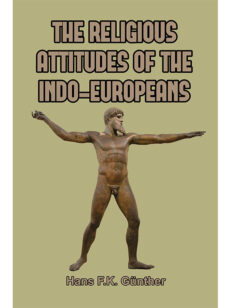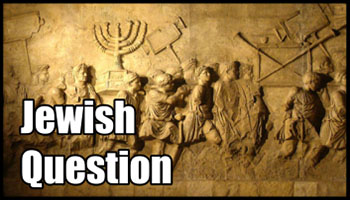Description
By Thomas Hodgkin. The dramatic story of the Frankish king Charlemagne, who changed the course of European history through his violent, bloodthirsty and remorseless forcible conversion of the German people to Christianity.
This classic study documents all of Charles’ historically significant undertakings, including the suppression of the Germanic Lombards in northern Italy, mini-crusades against the Moors in Spain, and wars with the invading Asiatic Avars and their allies in eastern Europe.
It was, however, Charles’ thirty-year war against the Saxon people—a tribe who went on to form the core of what became Germany—which left the most significant imprint upon the history of Europe.
Driven by a relentless fanaticism to convert them to Christianity, Charles persecuted a bloody war against the Saxons, famously ordering in his Capitulatio de partibus Saxoniæ that any Saxon found hiding in order to prevent being baptised as a Christian, be murdered forthwith.
This war of extermination sparked off numerous Saxon rebellions under their leader Widukind, and culminated in the infamous massacre of Verden, where Charlemagne ordered the beheading of 4,500 rebellious Saxons and then “went into winter quarters and there celebrated the birth of our Lord according to his wonted custom.”
In addition, this work reveals that those Saxons who still refused to convert, were deported by the thousands, and their young male children abducted and raised as Christians in Frank-land.
As Einhard, Charlemagne’s contemporaneous biographer wrote, the war against the Saxons was pursued “until they were either subdued and converted to the Christian religion, or annihilated.”
In this way, through the mass murder of non-believers, and the physical destruction of pagan sites such as the Irminsul, or sacred oak tree, all traces of the original Germanic religion were stamped out, and within one generation, Germany had been forcibly converted to Christianity. This remains one of the most significant cultural changes in the heart of Europe, and had ramifications which reverberated throughout history.
Contents
Preface
Chapter I: Introduction
Chapter II: Early Mayors of the Palace
Chapter III: Pippin of Heristal and Charles Martel
Chapter IV: Pippin, King of the Franks
Chapter V: Fall of the Lombard Monarchy
Chapter VI: The Conversion of the Saxons
Chapter VII: Revolts and Conspiracies
Chapter VIII: Roncesvalles
Chapter IX: Wars with Avars and Sclaves
Chapter X: Relations with the East
Chapter XI: Carolus Augustus
Chapter XII: Old Age
Chapter XIII: Results
Appendix A: Genealogy of the Ancestors of Charles the Great
Appendix B: Family of St. Charles the Great
Index
Illustrations
Emperor Charlemagne, by Albrecht Dürer, painted c. 1512.
Charles Martel in the Battle of Tours, a detail from Charles de Steuben’s painting, Bataille de Poitiers, en octobre 732.
The site of the massacre of Verden, where Charlemagne ordered the beheading of 4,500 Saxons, was marked in 1935 with the erection of 4,500 large stones in a memorial known as the Sachsenhain (German for ‘Grove of the Saxons’).
The submission of Widukund, a painting by Ary Scheffer, Charlemagne reçoit la soumission de Widukind à Paderborn.
Roland, the captain of the Frankish rearguard at the Battle of Roncesvalles, sounds his legendary horn in a vain attempt to summon help.
Map of the Spanish Marches of 806.
The Palatine Chapel in the centre of the Cathedral at Aachen (Aix-la-Chapelle). This part of the Cathedral was erected as the chapel of Charlemagne’s Palace between 796 and 805. The surrounding cathedral is one of the oldest in Europe, and was built by order of Charlemagne in 814.
The coronation of Charles as Emperor. A painting by Friedrich Kaulbach, Krönung Karls des Großen.
Charlemagne’s throne, on display at the Cathedral of Aachen.
A silver coin minted in Frankfurt during Charlemagne’s lifetime, and therefore probably a fairly accurate depiction of appearance.
206 pages. Paperback.



























